In a previous blog, we traced the roots of sleep medicine discoveries which serve as a basis for the future of the diagnosis and treatment for sleep disorders. We mapped the landscape of subspecialties that have developed the interdisciplinary field, and highlighted the discoveries made in each. This week we will describe the most promising trends for the future.
“It is not the strongest of the species that survives, nor the most intelligent, but the one most responsive to change.”- Charles Darwin
Every good story has a beginning. And the future of sleep medicine has its roots in the imperative to care for more complex chronic patient populations. You could say this challenge was inevitable with the aging and expanding (talking about obesity here) of America, but if you had to narrow it down to one day, that day would be March 23, 2010.
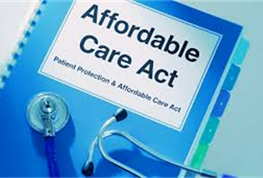 What happened on March 23rd? This was the day the Affordable Care Act (ACA) was signed into law. Over the intervening 10 years, we have seen the introduction of insurance pre-authorizations (i.e., precertification) for sleep testing, we’ve experienced a care model that increasingly utilizes Home Sleep Apnea Testing (HSAT) and Empiric PAP (Auto Positive Airway Pressure for sleep apnea) over in-lab Polysomnography and therapeutic sleep study options, and patients have been held to strict CPAP compliance standards for usage. This transition has forced the profession to look at how it performs basic functions and has led to a true transformation in the way sleep medicine has been practiced and staffed.
What happened on March 23rd? This was the day the Affordable Care Act (ACA) was signed into law. Over the intervening 10 years, we have seen the introduction of insurance pre-authorizations (i.e., precertification) for sleep testing, we’ve experienced a care model that increasingly utilizes Home Sleep Apnea Testing (HSAT) and Empiric PAP (Auto Positive Airway Pressure for sleep apnea) over in-lab Polysomnography and therapeutic sleep study options, and patients have been held to strict CPAP compliance standards for usage. This transition has forced the profession to look at how it performs basic functions and has led to a true transformation in the way sleep medicine has been practiced and staffed.
It’s not just Sleep. Today healthcare is no longer a fee-for-service operation. Providers are being graded on how they can improve patients’ quality of life, reduce exacerbations, reduce emergency department visits and/or hospitalizations, and reduce expenditures for medical care.
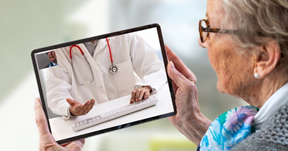 The sleep clinic of tomorrow. Your sleep consultation experience is the first indication that change is afoot. Telehealth has been a part of sleep care for some time. If you have a machine to treat constant positive airway pressure (CPAP), you are already using a form of it called Telemonitoring, where usage data from your device is recorded and sent electronically to your provider to show therapy compliance. Telemedicine, the practice that allows sleep professionals to provide clinical care from a distance, has historically been a less often used format but it has many advantages, especially in today’s COVID-19 environment and beyond: it eliminates the outpatient clinic commute, waiting room exposures and delays in scheduling (which, with outpatient closures is currently more difficult than in the past). Most Telemedicine formats involve a web-based video visit platform that is easy to use. All you need is a webcam attached to your computer or laptop and an internet connection. Another option is by “smartphone.” During the pandemic, audio-only is permitted as well. A telemedicine encounter from a Sleep specialist is exactly the same as in in-person visit, except it is done remotely. Rules around these services continue to evolve, so you must check with your insurance provider before seeking any telehealth service for “up-to-the-minute” benefits.
The sleep clinic of tomorrow. Your sleep consultation experience is the first indication that change is afoot. Telehealth has been a part of sleep care for some time. If you have a machine to treat constant positive airway pressure (CPAP), you are already using a form of it called Telemonitoring, where usage data from your device is recorded and sent electronically to your provider to show therapy compliance. Telemedicine, the practice that allows sleep professionals to provide clinical care from a distance, has historically been a less often used format but it has many advantages, especially in today’s COVID-19 environment and beyond: it eliminates the outpatient clinic commute, waiting room exposures and delays in scheduling (which, with outpatient closures is currently more difficult than in the past). Most Telemedicine formats involve a web-based video visit platform that is easy to use. All you need is a webcam attached to your computer or laptop and an internet connection. Another option is by “smartphone.” During the pandemic, audio-only is permitted as well. A telemedicine encounter from a Sleep specialist is exactly the same as in in-person visit, except it is done remotely. Rules around these services continue to evolve, so you must check with your insurance provider before seeking any telehealth service for “up-to-the-minute” benefits.
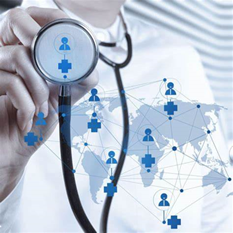 Your sleep clinician of the future is no longer alone in providing care for sleep disorders. Sleep clinics increasingly employ an interdisciplinary team of specialists including neurologists, psychologists/psychiatrists, otolaryngologists (along with pulmonologists) and more, and they work together to manage multi-layered sleep challenges. You see, not only does sleep affect every aspect of your physiology & psychology, everything affects sleep too!
Your sleep clinician of the future is no longer alone in providing care for sleep disorders. Sleep clinics increasingly employ an interdisciplinary team of specialists including neurologists, psychologists/psychiatrists, otolaryngologists (along with pulmonologists) and more, and they work together to manage multi-layered sleep challenges. You see, not only does sleep affect every aspect of your physiology & psychology, everything affects sleep too!
This team increasingly is turning to AI (artificial intelligence) to integrate the “big data” housed in the EMR (electronic medical record) of each patient to predict sleep disorders based on a patient’s health profile. Each patient presents with their own cocktail of anatomical, physical, psychological, and lifestyle characteristics. These are the ways in which OSA patients present differently than one another.
The location that can store this information is increasingly the EMR of each patient, which allows big data to extract these characteristics into a profile for each patient that can be used in treatment.
For example, big data may shed further light on the substantial issue of PAP therapy non-adherence. Knowing if a given patient was non-adherent to asthma inhalers or hypertension medications might predict adherence to CPAP. Big data analyses could predict the likelihood of non-adherence based on multiple inputs including such past adherence behavior as well as patient’s age, gender, race, severity of sleep apnea, daytime symptoms, personality, and hundreds of other variables. These kinds of analyses have the potential to someday be superior to a provider’s empirical judgment, which usually takes into account only on a small subset of these factors, and is limited by one’s individual ability to integrate large amounts of information and potential personal biases. Ideally, such information would not replace the provider judgment or insight, but enhance it and make it more precise and evidence-based.¹
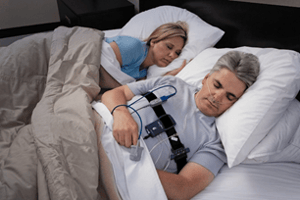 What’s in store for sleep studies? An important factor in the latent demand for therapy concerns the makeup of the U.S. population, which is aging and becoming more obese. According to the CDC, nearly 80 percent of adults and about one-third of children now meet the clinical definition of overweight or obese. More Americans live with “extreme obesity“ than with breast cancer, Parkinson’s, Alzheimer’s and HIV put together. This latent demand for diagnosis, and barriers to care, have enormous implications for the next few years as the population ages and obesity prevalence increases, both risk factors for the disorder.
What’s in store for sleep studies? An important factor in the latent demand for therapy concerns the makeup of the U.S. population, which is aging and becoming more obese. According to the CDC, nearly 80 percent of adults and about one-third of children now meet the clinical definition of overweight or obese. More Americans live with “extreme obesity“ than with breast cancer, Parkinson’s, Alzheimer’s and HIV put together. This latent demand for diagnosis, and barriers to care, have enormous implications for the next few years as the population ages and obesity prevalence increases, both risk factors for the disorder.
This need is illustrated by the calculation that 80% of the population with obstructive sleep apnea OSA has never received an initial diagnosis. Given that only 50% of those diagnosed are compliant with their prescribed therapy, this means that less than 10% of those suffering from Sleep Apnea in America are effectively treated!² This can be explained by the lack of awareness about sleep disorders and barriers to access care, whether they be financial or otherwise.
More widespread use of portable HSAT and APAP are thought to be an important piece of the solution to make diagnosis and treatment more readily available. In-lab PSG is the gold standard because it is attended by a trained sleep technologist, and the study data has added value due to the expanded physiology that is collected. With that said, HSAT is typically adequate for a subset of adult patients without complicating conditions (e.g., moderate to severe pulmonary disease, neuromuscular disease, congestive heart failure, and patients suspected of having other sleep disorders, including central sleep apnea, periodic limb movement disorder (PLMD), insomnia, parasomnias, circadian rhythm disorders, or narcolepsy). The next step for removing barriers to awareness of sleep disorders is expected to come from wearables.
“For the first time really we’re discovering physicians are expressing much more openness and willingness to consider information about their patients coming from DIY devices.”- Ceci Connolly, Leader of PwC’s Health Research Institute³
 One technological advance that will have an impact on the awareness of sleep disorders is the sleep data that is increasingly being tracked by wearables and other monitoring medical devices. Soon, advances in battery technology will allow watches to continue monitoring sleep throughout the night instead of requiring a pause in data collection during recharging.
One technological advance that will have an impact on the awareness of sleep disorders is the sleep data that is increasingly being tracked by wearables and other monitoring medical devices. Soon, advances in battery technology will allow watches to continue monitoring sleep throughout the night instead of requiring a pause in data collection during recharging.
Sleep apnea management in the inpatient setting of the future. Healthcare reimbursement scrutiny from payers have already turned their focus on perioperative OSA management and ‘hospital to home’ programs in order to prevent patient suffering and reduce readmission costs. The CMS Hospital Readmissions Reduction Program (HRRP) brought the issue of PAP compliance front and center for hospitalized patients.
The HRRP program penalizes hospitals that don’t improve surgical outcomes and recovery, the keys to keeping patients out of the hospital once they are discharged. This naturally prioritizes the management of OSA in the inpatient setting to identify OSA preop, and spurs more comprehensive perioperative care and postoperative recovery, especially for COPD patients. Since Chronic Obstructive Pulmonary Disease (COPD) affects over 12 million adults in the US and sleep apnea is among the co-occurring disorders associated with higher total COPD costs. COPD is the third leading cause of 30-day readmissions. Hospital readmissions alone account for over $15 billion annually, and 100% of this cost is placed upon hospital institutions. There are three patient populations who are most in need of these services⁴:
- Sleep apnea patient peri- and post-operative safety and compliance
- Safety monitoring for ventilator (invasive and non-invasive) accommodation for recently discharged acute patients
- Monitoring of post-operative patients for opioid-induced respiratory depression
The increase in both the awareness of the added risks placed on peri-operative patients by OSA, and the resulting effort to address inpatient management of the disease because of heightened regulatory scrutiny of hospital readmission rates and consequences for unhealthy outcomes from hospital stays has also led hospitals to begin responding with something called “Sleep Navigator” programs. A Sleep Navigator, certified in clinical sleep health, is a new inpatient role hired with the sole purpose of focusing on screening, educating, and assisting hospitalist/physicians with ordering sleep testing as part of discharge planning for inpatients. It is because Obstructive Sleep Apnea (OSA) is associated with significantly increased adult post-surgical risks and complications⁵ that hospitals are using the Sleep Navigators for perioperative OSA management functions. All Sleep Navigator functions focus on safety in recovery and compliance with CPAP and other sleep-related breathing disorder therapies.
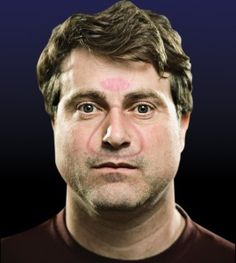 Patients taking a more active role in their healthcare decisions. Insurance changes have shifted the economic burden to patients. As a result of having to pay higher deductibles, co-pays, etc., patients are becoming more involved in their healthcare decisions (i.e., apps; internet research; internet device purchases; patient interest in downloading and tracking their PAP data), and being selective about their care. The ACA has attempted to reduce healthcare costs by placing more of the economic burden on patients, and the awareness of copays and deductibles has already driven patients to take a more active role in their healthcare decisions. This means patients are expecting, even demanding, better sleep care including an improvement in access in outcomes. For example, in the treatment of sleep apnea, the mask interface is a significant determinant for CPAP compliance. This has led to the development of more comfortable and better fitting masks. While most CPAP companies have improved their masks using materials (i.e., plastic and silicone) found in the original masks from the 1980’s, Circadiance® made the transformative step to release an entire line of SleepWeaver® masks made entirely of skin-friendly cloth.
Patients taking a more active role in their healthcare decisions. Insurance changes have shifted the economic burden to patients. As a result of having to pay higher deductibles, co-pays, etc., patients are becoming more involved in their healthcare decisions (i.e., apps; internet research; internet device purchases; patient interest in downloading and tracking their PAP data), and being selective about their care. The ACA has attempted to reduce healthcare costs by placing more of the economic burden on patients, and the awareness of copays and deductibles has already driven patients to take a more active role in their healthcare decisions. This means patients are expecting, even demanding, better sleep care including an improvement in access in outcomes. For example, in the treatment of sleep apnea, the mask interface is a significant determinant for CPAP compliance. This has led to the development of more comfortable and better fitting masks. While most CPAP companies have improved their masks using materials (i.e., plastic and silicone) found in the original masks from the 1980’s, Circadiance® made the transformative step to release an entire line of SleepWeaver® masks made entirely of skin-friendly cloth.
- Several studies have investigated the pressure exerted on the bridge of the nose and have postulated that CPAP interfaces with greater pressure levels in this location may lead to an increase in patient discomfort and a decrease in compliance, and have shown that different mask designs/materials can significantly change the pressure exerted on the skin by the CPAP mask.⁶
- A 90-day adherence study from 2014 showed a 107 minute nightly increased use of CPAP when fitted with SleepWeaver® skin-friendly, soft cloth masks, compared to a traditional masks constructed of silicone and plastic. Patients in this study used the SleepWeaver® cloth masks more and were more likely to continue with therapy than the traditional mask group.⁷
- The mechanism for developing a pressure ulcer is prolonged pressure over bony prominences that exceeds supra capillary pressure (70mm Hg).⁸
- In recent comparison testing ahead of publication, SleepWeaver® masks were found to exert 67% less pressure on the bridge of the nose than comparable masks made of traditional materials like plastic and silicone, and the average pressure exerted on the bridge of the nose from all tested SleepWeaver® masks was below the threshold for capillary closing (70mm Hg), in contrast to the average comparable traditional mask.⁹ Therefore, for CPAP users with skin sensitivity, comfort, or compliance concerns, SleepWeaver® has increasingly become a mask choice of first resort.
The field of Sleep Medicine has come a long way since the first full service sleep lab at Stanford University some 50 years ago. Though it has been a relatively short trip, the path has uncovered significant advances that have added to our mapping of the overall terrain for the future.
—Matthew Anastasi, BS RST RPSGT, Clinical Coordinator Consultant, Circadiance
REFERENCES
¹ Budhiraja R, Thomas R, Kim M, Redline S. The Role of Big Data in the Management of Sleep-Disordered Breathing. Sleep Med Clin. 2016;11(2):241-255. doi:10.1016/j.jsmc.2016.01.009
² Watson NF. Health Care Savings: The Economic Value of Diagnostic and Therapeutic Care for Obstructive Sleep Apnea. J Clin Sleep Med. 2016;12(8):1075-1077. Published 2016 Aug 15
³12 Best Quotes on the Future of Healthcare. Klara. https://www.klara.com/blog/12-best-quotes-on-the-future-of-healthcare. Accessed November 29, 2020.
⁴Press VG, Konetzka RT, White SR. Insights about the economic impact of chronic obstructive pulmonary disease readmissions post implementation of the hospital readmission reduction program. Curr Opin Pulm Med. 2018;24(2):138-146. doi:10.1097/MCP.0000000000000454
⁵Poeran J, et al. (2019). Impact of obstructive sleep apnea on perioperative complications among patients undergoing hysterectomy: a population-based analysis.Sleep Med. 56, 117-122.
⁶Brill AK, Pickersgill R, Moghal M, Morrell MJ, Simonds AK. Mask pressure effects on the nasal bridge during short-term noninvasive ventilation. ERJ Open Res. 2018 Apr 9;4(2):00168-2017. doi:10.1183/23120541.00168-2017
⁷Sico A, Bajwa I, Clawson T, Tyger S, Woidtke R. A 90-Day Adherence Study in Newly Diagnosed CPAP Patients Using a Soft Cloth CPAP Mask vs a Traditional Nasal CPAP Mask. Chest. 2014 Oct 1;146(4)2:945A. doi:10.1378/chest.1983486
⁸Kirshblum S, Gonzalez P, Cuccurullo C, Luciano L. Chapter 7: Spinal Cord Injuries. In: Cuccurullo C, ed. Physical Medicine and Rehabilitation Board Review. Demos; 2004:548.
⁹Anastasi M, Pasquale M, Tubbs A. Comparison of PAP Interface Pressure on the Nasal Bridge: Soft Cloth vs. Traditional Masks. Abstract submitted for publication. 2020.





